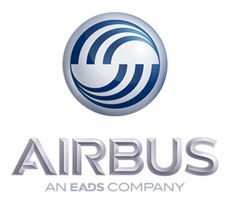Thu, Sep 13, 2012
Letter Of Intent Signed By European Aeronautic Industry And Research Partners To Extend The Program Through 2020
Airbus has entered into an agreement together with 13 leading aerospace industry and research partners with a letter of intent to cooperate on a “Clean Sky 2” program. As an extension of the European Commission’s (EC) “Clean Sky” Joint Technology Initiative, the industry would invest jointly with the EC a total of $4.6 billion over seven years on transport research in the framework of Clean Sky 2.

Clean Sky 2 will build a bridge towards the targets of ‘Flightpath 2050’ and the new ACARE Strategic Research and Innovation Agenda. These targets include the reduction of air transport CO2 emissions per passenger kilometer by as much as 75 percent by 2050.
Airbus is currently playing a leading role with its partners in the seven-year Clean Sky research program. Airbus’ key contribution, the advanced laminar flow “Smart-Fixed-Wing” Airbus A340 demonstrator is progressing well. Clean Sky 2 will take the industry’s collaborative research to the next level to prepare for a new wave of technologies.
“Building on the success of the Clean Sky JTI initiative, Airbus looks forward to participating in the Clean Sky 2 program," said Charles Champion, Chairman of the Clean Sky governing board and EVP of Engineering at Airbus. "This will contribute new environmentally-friendly technologies and also reinforce the competitiveness of Europe’s aeronautics sector. Together with other major European aerospace companies in Clean Sky 2, Airbus will help to radically improve air transport’s environmental impact through step change technologies and solutions to further reduce fuel consumption, emissions and noise.”
As part of the agreement, Clean Sky 2 would become incorporated in the European “Horizon 2020” program, to run from 2014 to 2020. This LoI also expresses the European industry’s commitment to align its strengths and to significantly increase investment in European R&T through Clean Sky 2. This reflects the importance of strong and continued investment and co-operation to respond appropriately to the future challenges of air traffic.
More News
About 100 Ft Above Ground Level, The Engine Lost Total Power On April 14, 2025, about 1003 Pacific daylight time, an experimental amateur-built Hy-Tek Hurricane HP, N9088G, was sub>[...]
Flight Check A call-sign prefix used by FAA aircraft engaged in flight inspection/certification of navigational aids and flight procedures. The word “recorded” may be a>[...]
“While our traditional mechanical magnetos will be around for a long time, Hartzell Engine Tech acquired E-MAG to expand its PowerUP Ignition System product portfolio into bo>[...]
Primary Radar A radar system in which a minute portion of a radio pulse transmitted from a site is reflected by an object and then received back at that site for processing and dis>[...]
Also: ‘Sonoran Beauty’ Jump-Qualified, IAG Orders, FAA Shuts Down ATC Oversight, EAA Joins Modern Skies Slovakia-based developer Klein Vision recently unveiled the prod>[...]
 NTSB Prelim: Hy-Tek Hurricane HP
NTSB Prelim: Hy-Tek Hurricane HP ANN's Daily Aero-Term (05.14.25): Flight Check
ANN's Daily Aero-Term (05.14.25): Flight Check Aero-News: Quote of the Day (05.14.25)
Aero-News: Quote of the Day (05.14.25) ANN's Daily Aero-Term (05.15.25): Primary Radar
ANN's Daily Aero-Term (05.15.25): Primary Radar Airborne 05.12.25: $1M Flying Car, Marion Airport Saved, AirVenture Cup
Airborne 05.12.25: $1M Flying Car, Marion Airport Saved, AirVenture Cup



